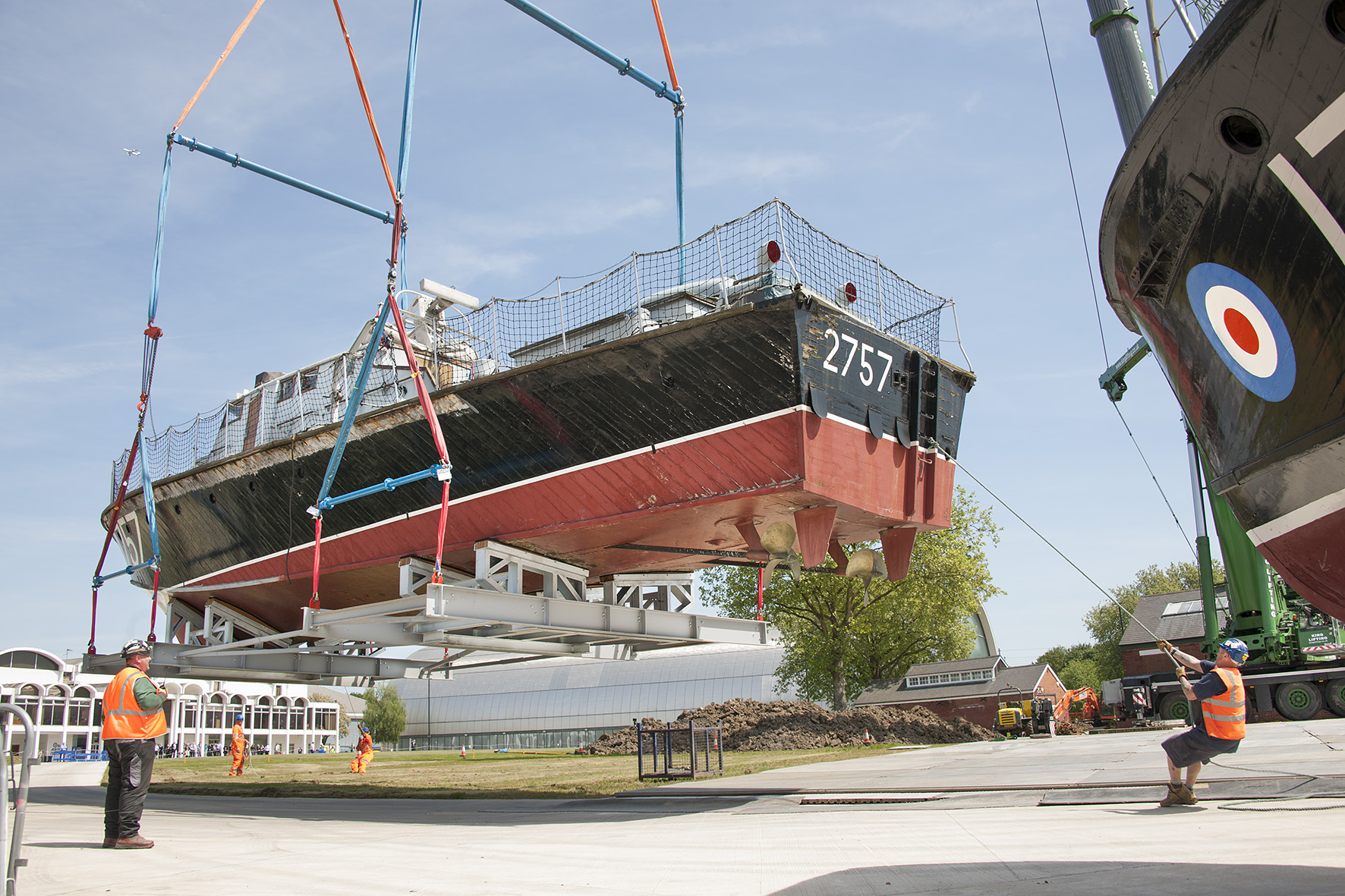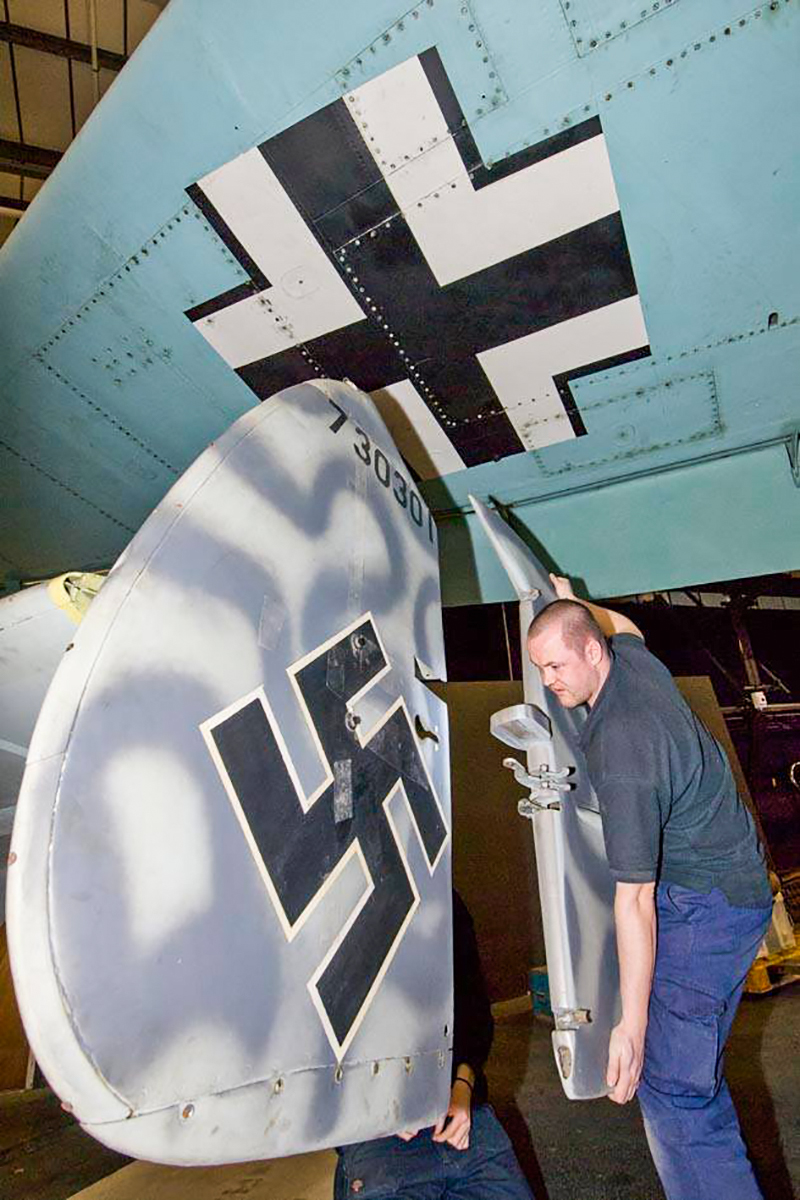A lot of work is currently coming to a conclusion at the Royal Air Force Museum in London, England. Situated beside the site of the old RAF Hendon aerodrome, which dates back to the dawn of flight, the Museum has been undergoing a significant upgrade, both internally and externally, in celebration of the RAF’s Centenary this year. While several parts of the museum have been closed since late 2016, the museum will formally re-open on June 30th this year. The public will see a museum which has undergone much change, with several new exhibits and a more inclusive atmosphere.
According to a recent press release, the “Museum’s ambitious redevelopment features new immersive galleries, freshly landscaped green spaces, a children’s playground and new restaurant, making it the only place in London where visitors can test their flying skills, explore RAF stories, sit inside an iconic cockpit and enjoy a picnic in a single day.”
The RAF Centenary ambitions are being delivered over several phases:
The First World War in the Air:
New exhibitions opened in 2014 on both our London and Cosford sites. Visitors can now discover the vital work of the Servicemen and women on the ground as well as the changing roles of those in the air, as the essential use of ‘eyes in the sky’ for reconnaissance was complemented by the introduction of new technologies for bombing and fighting above the ground. This phase has been supported by HLF and BAE Systems.
The First 100 Years:
We will transform the visitor experience at our London site through a new entrance to the Museum leading to introductory exhibitions showcasing the RAF experience in its first century and discussing the opportunities and challenges for its future. The project will break down physical and cultural barriers ensuring Access for All – intellectual, social, physical, aesthetic and emotional.
Historic Hendon:
We will bring back the sense of space and place to the RAF Museum’s site in London. It will echo the former airfield heritage with green landscaping and flexible outdoor facilities. Play, community, garden and heritage will combine to provide a space for all our visitors to escape, learn and have fun.
Age of Uncertainty:
A new exhibition will look at the role of the RAF since the Cold War – its challenges and the experience of RAF personnel around the globe in a fast-changing world.
Amongst the items on the move recently are the two former RAF Launches, which have sat outside at the facility since the early 2000s. These launches represent the fleet of high speed patrol boats which the RAF operated between 1918 and 1986 within the Marine Branch as seaplane tenders, training support vessels, and many other duties, including the rescue of downed airmen.
Although the two boats on external display are post-war examples, they are an important reminder of the risks that aircrew face when flying over water, even in peacetime. Within the museum itself is Seaplane Tender 206, one of the earliest of the high-speed launches, dating from 1931. Developed in part under the inspiration of ‘T.E. Shaw’ (aka T.E. Lawrence, or Lawrence of Arabia) during his time living under a pseudonym in the RAF following WWI, these boats rescued countless airmen whose aircraft came down over the seas surrounding the British Isles, and other regions of what was then a globe-spanning empire.
For a look at one of the few remaining sea-worthy RAF launches, check out the video below HERE.
As mentioned earlier, several of the museum’s displays, including the Battle of Britain and Sunderland Halls have been closed since late 2016 while the renovations have been taking place. While this has been going on, the RAF Museum has taken the time to perform a detailed survey and conservation of a number of priceless aircraft from the Battle of Britain collection, including Hawker Hurricane Mk.I, Supermarine Spitfire Mk.I, Heinkel He 111 and Me 110, most of which retain much of their original wartime patina. The RAF Museum explained some of what they have been doing as follows…
…A dedicated team of technical staff, apprentices and volunteers has been researching aircraft from the collection and looking ‘beneath the skin’ to carry out a detailed conservation survey. Many of the team have been making weekly journeys from the Michael Beetham Conservation Centre at the Museum’s Cosford site to ensure we have the right expertise involved in the review.
The focus of the survey has been on aircraft exhibited to tell the Battle of Britain story, in order for any conservation work to be carried out in advance of their planned redisplay.
Relocating the aircraft to our galleries which explore the story of the Second World War in the air will enable us to integrate and explain the service and sacrifice made across all the Commands of the Royal Air Force for all our visitors at both our Cosford and London sites.
The final stages of the survey and conservation work will be carried out over the next two months, followed by the relocation and redisplay of the aircraft. Information about our progress will be shared regularly through the website and RAF Centenary e-newsletters.
Redisplay plans will see five aircraft moving to new locations on our Cosford site (the Messerschmitt Bf 109G-2, Junkers Ju 88 R-1, Boulton Paul Defiant I, De Havilland Tiger Moth II and Gloster Gladiator I). The display of the Boulton Paul Defiant I in a West Midlands venue is particularly relevant given the company’s local history.
In London, four aircraft will move into our main gallery (the Supermarine Spitfire I, Hawker Hurricane I, Fiat CR.42 and Messerschmitt Bf 109E).
Four will be redisplayed in Bomber Hall with the Messerschmitt Bf 110G-4 displayed in pursuit of the Lancaster, clearly demonstrating the challenges of night bombing. The Heinkel He 111 H-20, Junkers Ju 87G-2 Stuka and Bristol Blenheim IV will complete the story.
When the RAF Museum re-opens on June 30th, it will doubtless be a radically new space in many ways, with enhanced displays, bringing it into the 21st century. Hopefully it will be received warmly by the greater public, and help to promote the history and of the men and women of Britain’s Royal Air Force and the many important historic artifacts within the RAF Museum’s collection.































